How to spot and avoid shady link building vendors
Avoid the pitfalls of link network spam. Here’s how to spot scammy pitches, identify toxic sites and protect your brand’s SEO.
Have you ever been tempted to pay for a really great link?
Between Google’s algorithm leak and Danny Goodwin’s subsequent exposé of the importance of links for rankings, the broader marketing industry is having its “aha” moment while scrambling to launch digital PR strategies that earn high-authority links at scale.

Sadly, many brands will look for shortcuts and they’re about to experience the scourge of link network spam.
I’ve been at the receiving end of hundreds of scammy pitches promising high-authority links at seemingly legitimate sites for a fraction of the cost of most reputable content marketing agencies:

What’s even more terrifying is that some of these vendors have access to legitimate sites and these publishers could soon face penalties as a result.
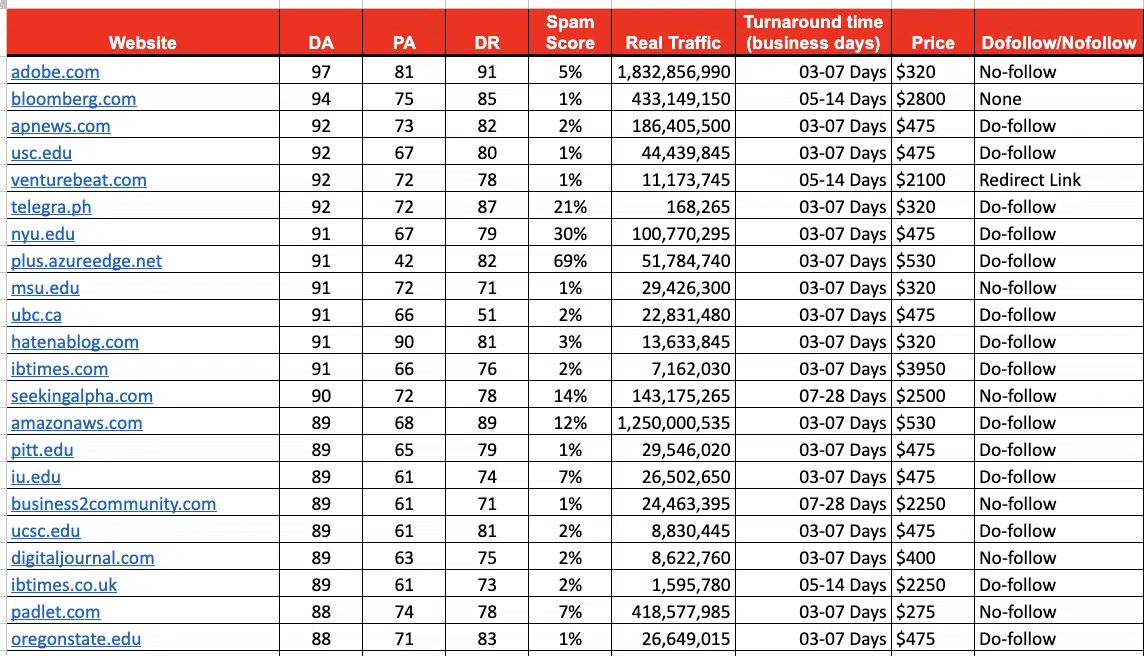
How do you protect your brand from the deluge of link network spam and how can you spot the most toxic sites?
To provide a more data-driven exposé, I curated hundreds of spammy link network pitches we have received over the last few years.
I conducted an in-depth analysis of the commonalities between these pitches along with an audit of the common publishers associated with dozens of vendors, providing insights on how to identify and avoid them.
How to spot a spammy link network pitch
The first step in my analysis was consolidating hundreds of these pitches into a single repository, allowing for a thorough examination of their commonalities.
Here’s a brief snapshot of the pitches I analyzed for reference:

Quickly, patterns emerged in these often generic emails that lacked substance while simultaneously promising remarkable SEO results:
- Overly generic introductions: Vague introductions without specific details about the sender or their credentials.
- “I hope this message finds you well.”
- “I hope you are keeping well and safe.”
- Random capitalization: Incorrect capitalization and grammar issues throughout the pitch.
- “We provide Natural, relevant, in-content links, from 100% real bloggers.”
- “I have a good number of relevant Quality Sites, where I can help you to build Guest Post-Blog Post Links which help you to get good Domain Authority and Rank High in Google and other Search Engines.”
- Too-good-to-be-true offers: Promises of high-quality backlinks on sites with high Domain Authority (DA) for very low prices.
- “I can offer you access to a curated list of high-demand and premium websites with Domain Authority (DA) ranging from 50 – 90.”
- “We can tap into my extensive network to deliver exceptional results, improving your clients’ search rankings and organic reach.”
- Urgency and no upfront costs: Claims of no upfront costs, which often indicate a pay-after-results scam.
- “Permanent Post Guaranteed. Do-Follow. Payment after link. The post will be Google Index.”
- “I have more than 10k sites with high traffic. Price starts from $10. Should I send you my site lists?”
- Guaranteed results: Assurance of guaranteed results or permanent links, which is not always realistic in SEO.
- “We offer permanent links, guaranteed.”
- “Choose from 73k+ websites across 60+ niches for efficient link-building. Receive live links in 2-3 business days.”
- Lack of trust signals: No reference to specific brands they’ve worked with, nor the inclusion of any case studies or specific metrics demonstrating their results.
- Lack of personalization: Generic emails that do not address the specific needs or content of the recipient’s website.
- Suspicious contact information: Unbranded email addresses (@gmail.com); often lacking legitimate names and verifiable contact information.
Understanding these patterns should be the first step in redirecting these pitches to your spam folder.
While I’m hopeful that most CRMs will allow you to blacklist certain keywords from your contact forms (e.g., “guest post service provider”) one day soon, until then, it’s important to teach your team to recognize these trends.
This will help them better identify potentially harmful link building pitches that could jeopardize your website’s standing with search engines.
The most common strategies of shady link building agencies
While there are dozens of effective link building strategies that could drive incredible results for your brand, scammy vendors commonly rely on low-value or black hat strategies instead.
1. Guest post solicitors: ‘Pay a nominal fee to pen a column on my site that gets 50K monthly visitors’
One of the most common pitches we receive is from vendors soliciting guest posts as a way for our clients to “quickly and easily earn high-value” links. These pitches pose the most harm to SMBs, since they prey on their smaller budgets, limited capacity and eagerness to drive quick results.

But they come at a steep price: Your site being deindexed.
Oftentimes, these vendors claim to own sites that generate five figures in monthly organic traffic, which is your first opportunity for a quick spot check.
More often than not, you’ll see an exponential growth curve in referring domains, which is mirrored by an equally drastic decrease in organic traffic.
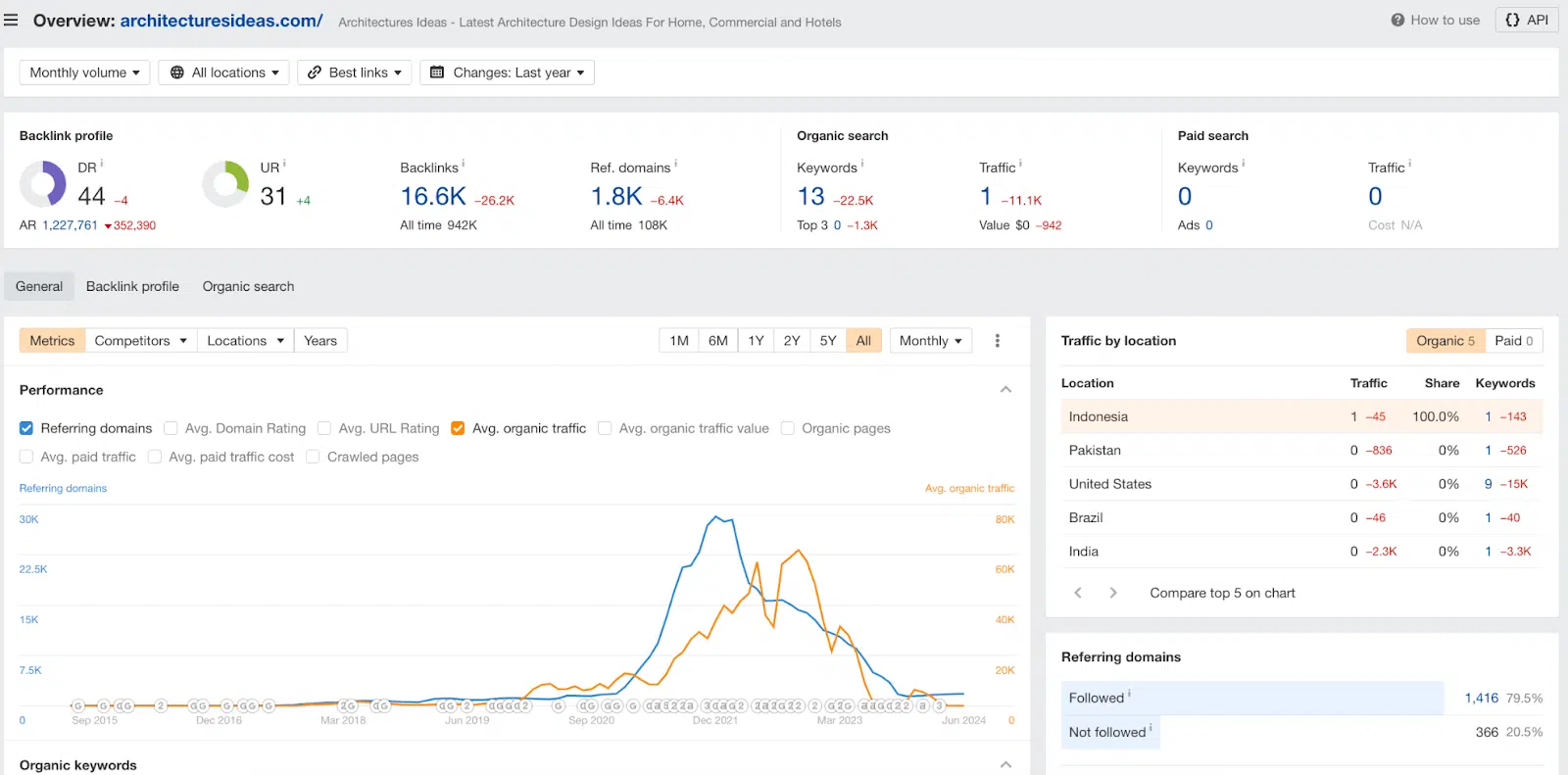

2. The link exchange: ‘If you link to my resource, I’ll link to yours’
Link exchanges are the second most common offer we receive, with pitches often highlighting seemingly legitimate publishers.
While I’ll often roll my eyes over Fortune 500 PR teams mass-blasting us with link exchanges around HR and design resources, I’m more scrupulous when vetting pitches from seemingly legitimate domains owned by niche SMBs.
Typically, these vendors will start with a somewhat personalized pitch about your brand’s impressive content strategy, but the remainder of the pitch will prove they know little about the overarching themes you cover:

While some site managers might be open to adding this “harmless link” into a somewhat relevant blog post in consideration of a high-value link exchange, these links actually open you up to a toxic backlink portfolio.
Over time, Google will catch up to these massive, unnatural link portfolios and both domains risk being penalized:
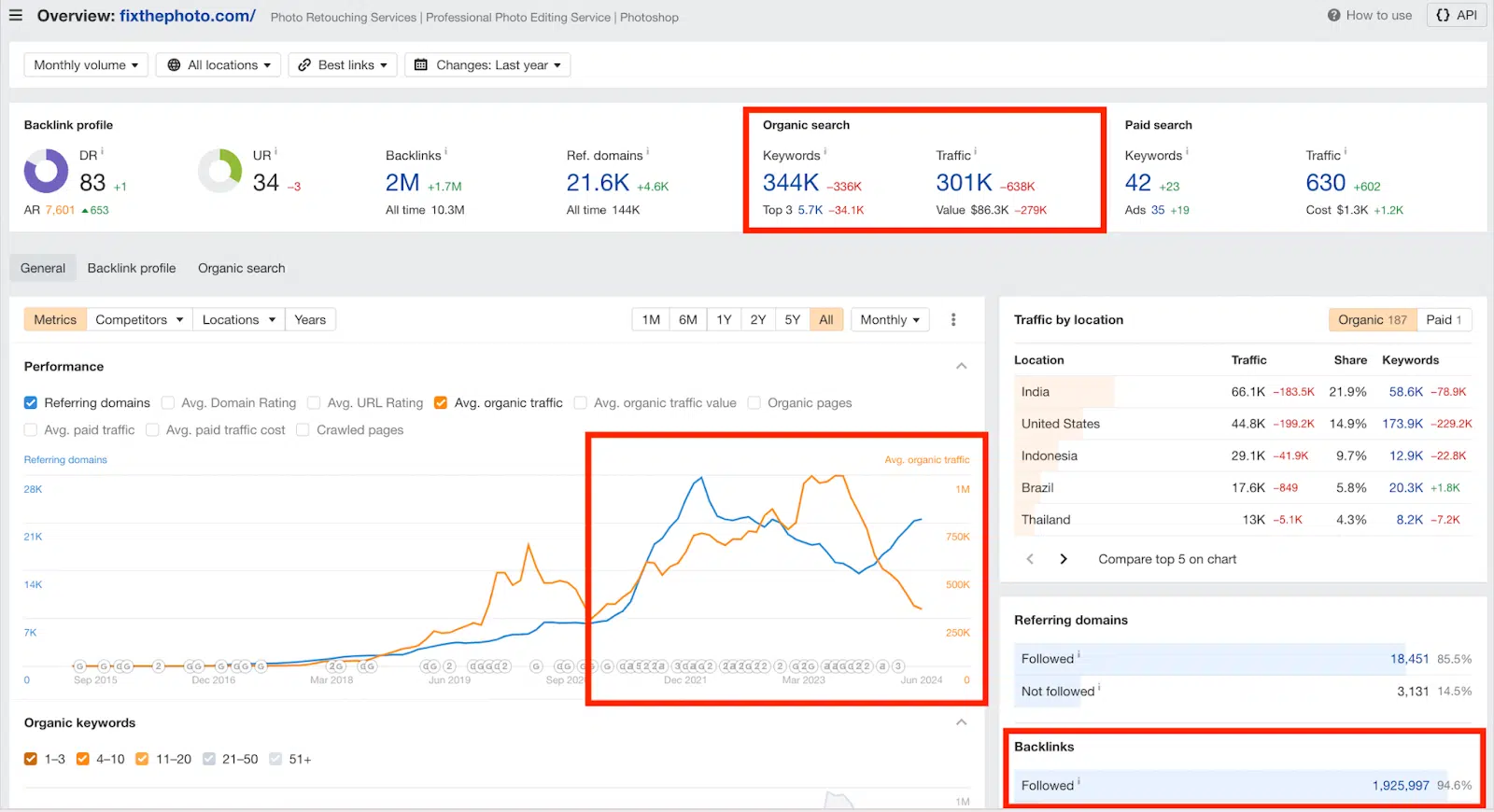
3. Guest post requests: ‘I see you cover ABC, I’d like to submit a post on XYZ’
The worst part about link spammers is the volume of irrelevant garbage that floods your inbox.
Writing guest posts for mainstream news sites or industry-relevant publishers is a great way to boost your thought leadership and earn reputable links.
However, accepting guest posts that don’t match your niche can severely damage your brand’s content quality and reputation, no matter how well you try to hide it.
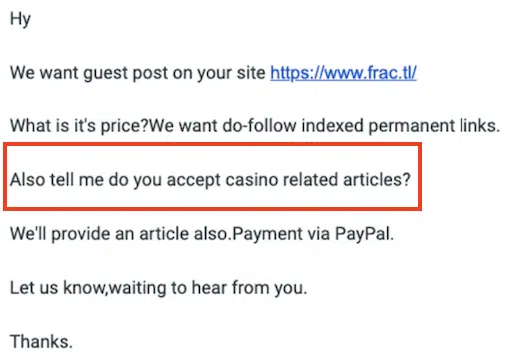
4. Guaranteed .edu links: AI-generated stories on hacked .edu domains
One of the most intriguing parts of this project was investigating vendors who promised coveted .edu links from Ivy League and other U.S.-based and international colleges.
First, I requested examples of the links they had achieved on these sites.
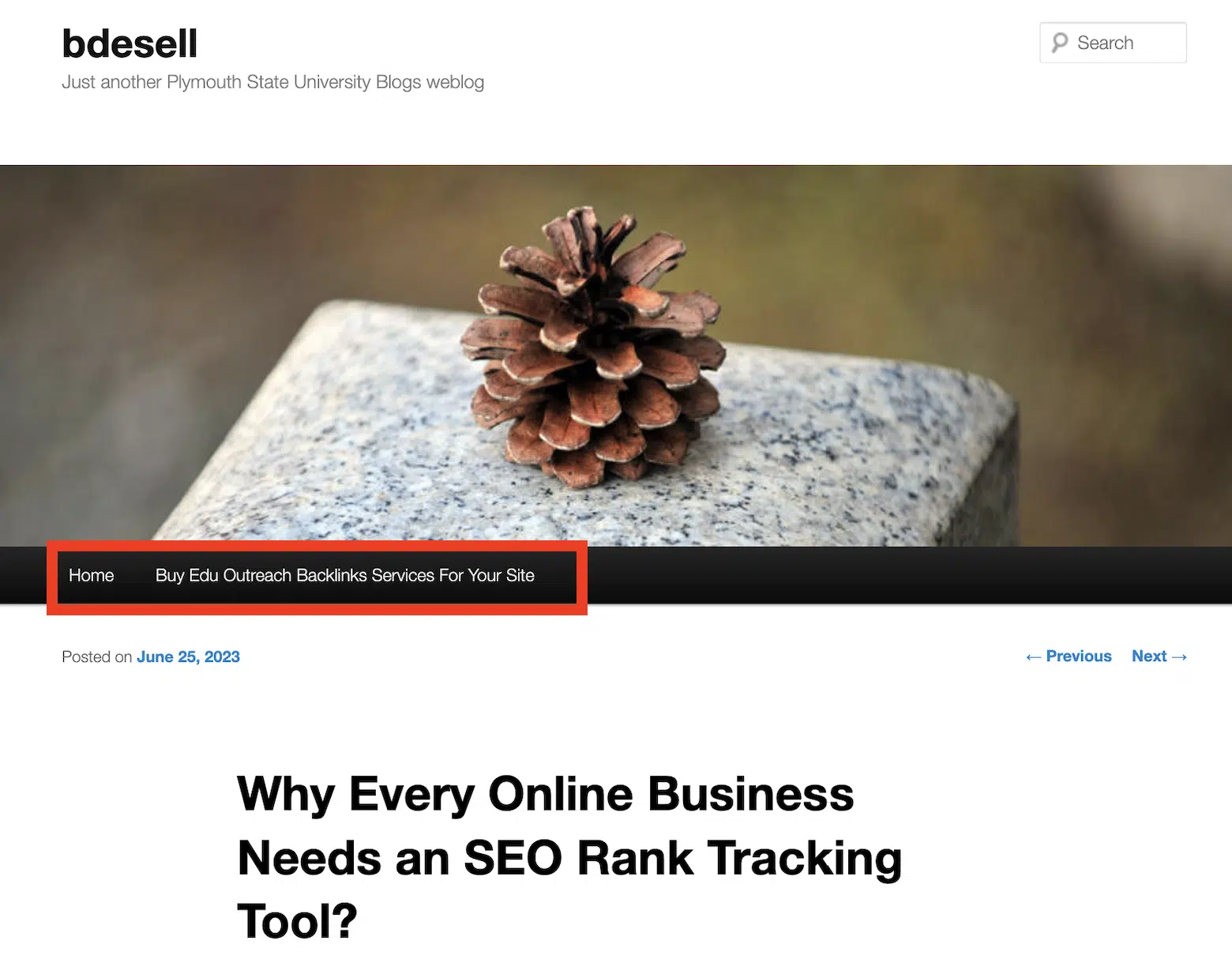
Although few vendors reluctantly complied with my request, I uncovered a trove of issues:
- Dozens of the examples were hacked pages on .edu sites, such as:
- https://wordpress.cs.vt.edu
- https://wordpress.ed.pacificu.edu
- Some leveraged PressBooks to gain access to .edu links:

- Several pages were created as .pdf links and were hidden from the main site navigation instead of being nested as normal blog pages:
- https://canvas.ubc.ca/eportfolios/46591/Parker/MCDLevel1_PDF_Dump_Easy_Technique_to_A_Success
- A significant portion of the examples presented as client wins either redirected (301) or resulted in server errors (502):
- https://gogs.as.arizona.edu/emmadobie/mblog/issues/6
- https://myweb.uiowa.edu/dpipr/
- The majority of the articles were incredibly thin (< 200 words), and many longer articles were flagged as AI content by basic detectors.

Ultimately, I identified dozens of SMBs that were the victims of these offers, with many sites receiving penalties.
How to verify a quality link from a shady one
In the deluge of link network spam, it seems that these vendors are scaling B2B outreach teams that exclusively target domain owners, agency owners, digital PR directors and any other LinkedIn profile that mentions growth or links.
It’s incorrigible, and more brands need to be aware of this risky offer.
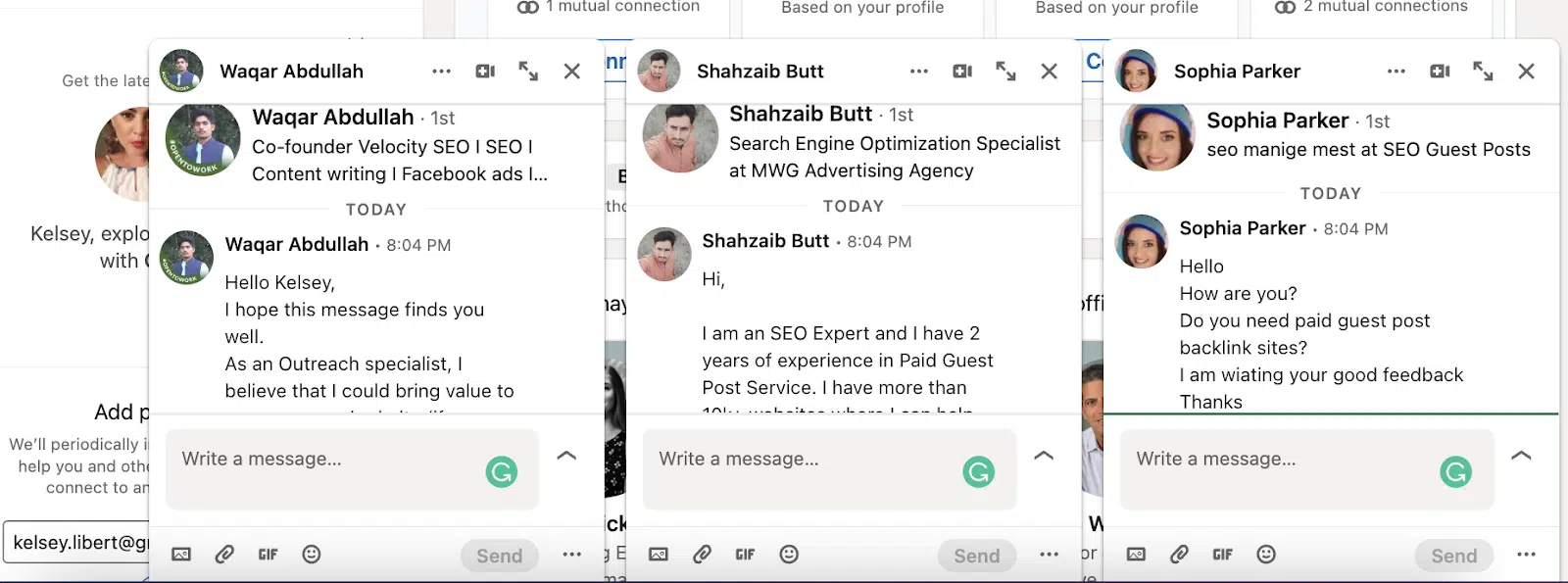
As I hinted at above, the best ways to vet these vendors involves:
- Verifying which countries they’re getting the majority of their traffic from. These are the top 10 most common countries that appeared as a primary traffic source across the thousands .coms listed in the link vendor publications I analyzed:
- India
- Pakistan
- Indonesia
- Sri Lanka
- Malaysia
- Ethiopia
- Russia
- Kenya
- Philippines
- Australia
- Checking for an exponential growth curve in their referring domains. Whenever you see a site go from a couple hundred to a couple thousand referring domains overnight, something is fishy and likely will be followed shortly by a Google manual action.
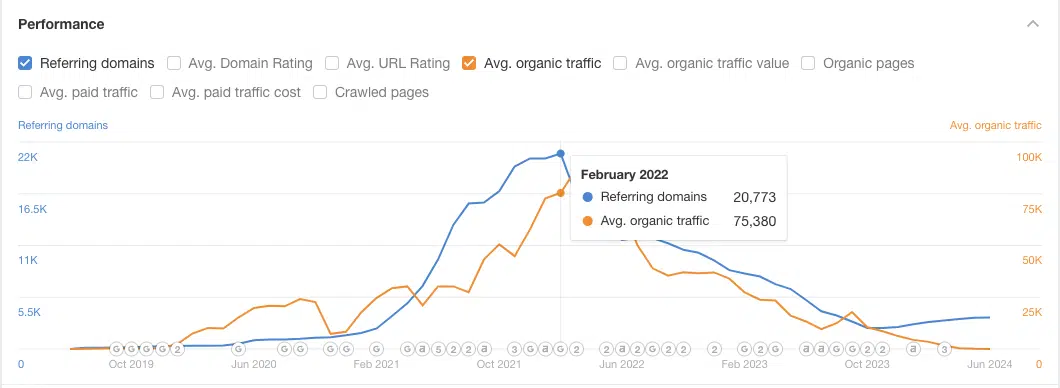
- Analyzing the volume of authoritative backlinks they’ve earned. Since domain authority is on a logarithmic scale, it’s normal for a site to have a significantly smaller percentage of authoritative links. However, when you see a site’s total backlink volume clearing 20,000 and high-authority links under 100, the ratio is off and can be a clear signal for a toxic backlink portfolio you want to avoid.

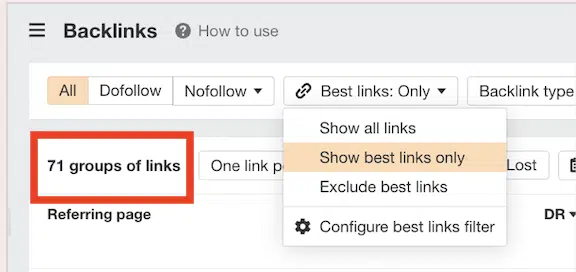
While there are dozens of methods for checking a site’s backlink portfolio and authority, these are the three quickest routes I’ve found for identifying shell sites being built as link networks that will one day be penalized by Google.
The cost of buying links
The best link building strategies are designed to earn relevant top-tier backlinks by providing something of value to journalists.
This typically involves quotes from subject matter experts (SMEs) or exclusive industry research your brand produced that journalists perceive as newsworthy and of value to their audience.
Unfortunately, too many brands still rely on quick-hitting strategies offered by paid link vendors, but in time, they’ll feel the full wrath of Google.
While SMBs with limited SEO knowledge are most at risk for falling prey to these offers, even reputable brands we work with have come to us for refuge after falling victim to these snake oil salesmen.
Although link vendors may initially appear to offer trusted publisher links at an insignificant cost, my analysis of over 20,000 paid link opportunities reveals a different story.
High-value links from these vendors often cost as much as those from reputable agencies, with the added risk of your site being deindexed.
- DA 30-39: $204.21
- DA 40-49: $229.58
- DA 50-59: $225.81
- DA 60-69: $277.74
- DA 70-79: $451.63
- DA 80-89: $549.03
- DA 90+: $597.76
- .edu links: $444.42
What’s even wilder is the seemingly reputable publishers that appear most frequently across these vendors:
- deadlinenews.co.uk
- natureworldnews.com
- latinpost.com
- kpopstarz.com
- kdramastars.com
- philly.com
- presstelegram.com
- newsmax.com
- timesunion.com
- cbs19news.com
- buffalonews.com
- suntimes.com
- psychcentral.com
- orangecounty.com
- valuewalk.com
- thedailybeast.com
- newsexaminer.com
- chronicleonline.com
- smmirror.com
- ibtimes.co.uk
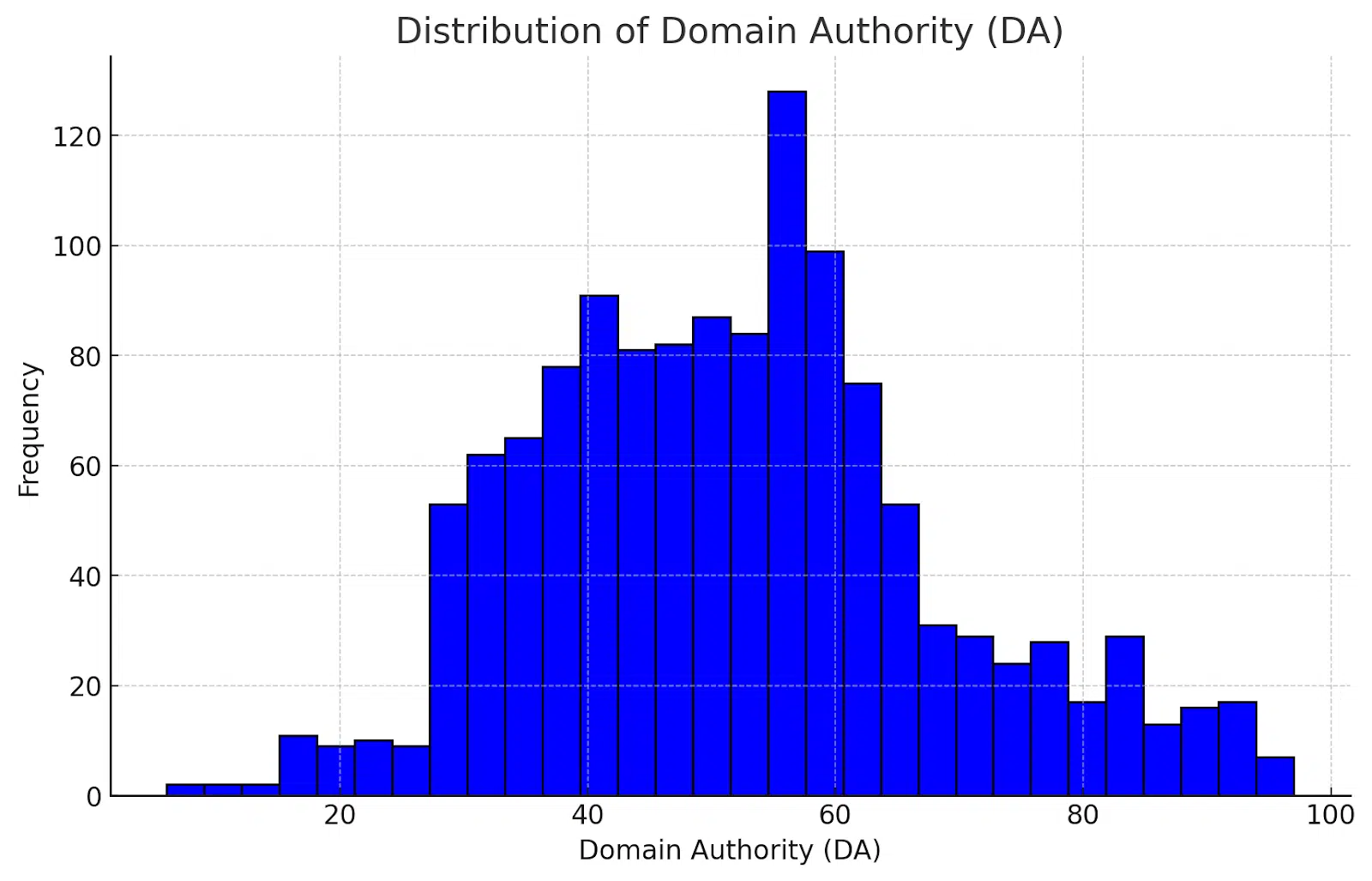
And their sharp traffic declines in recent years:
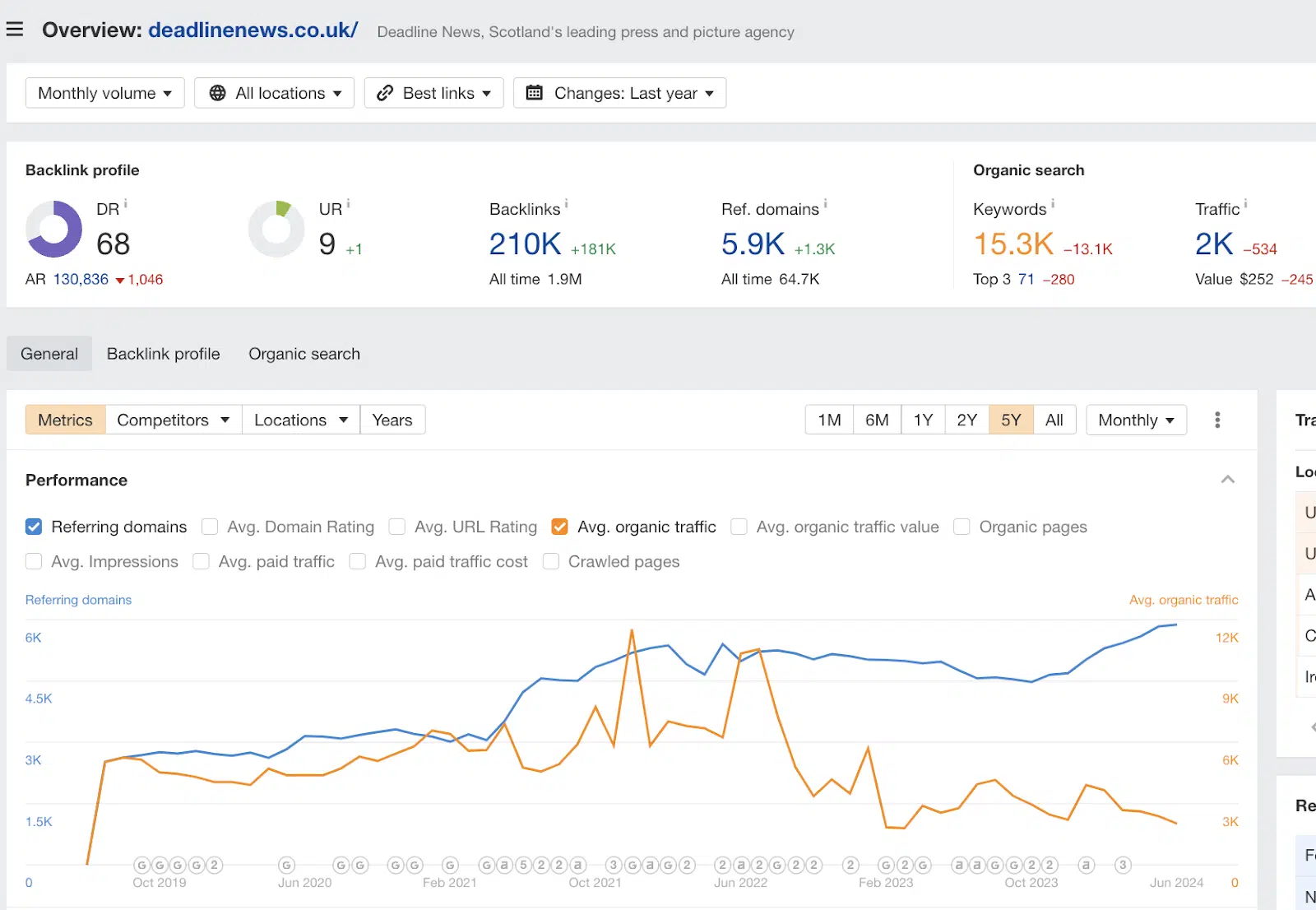
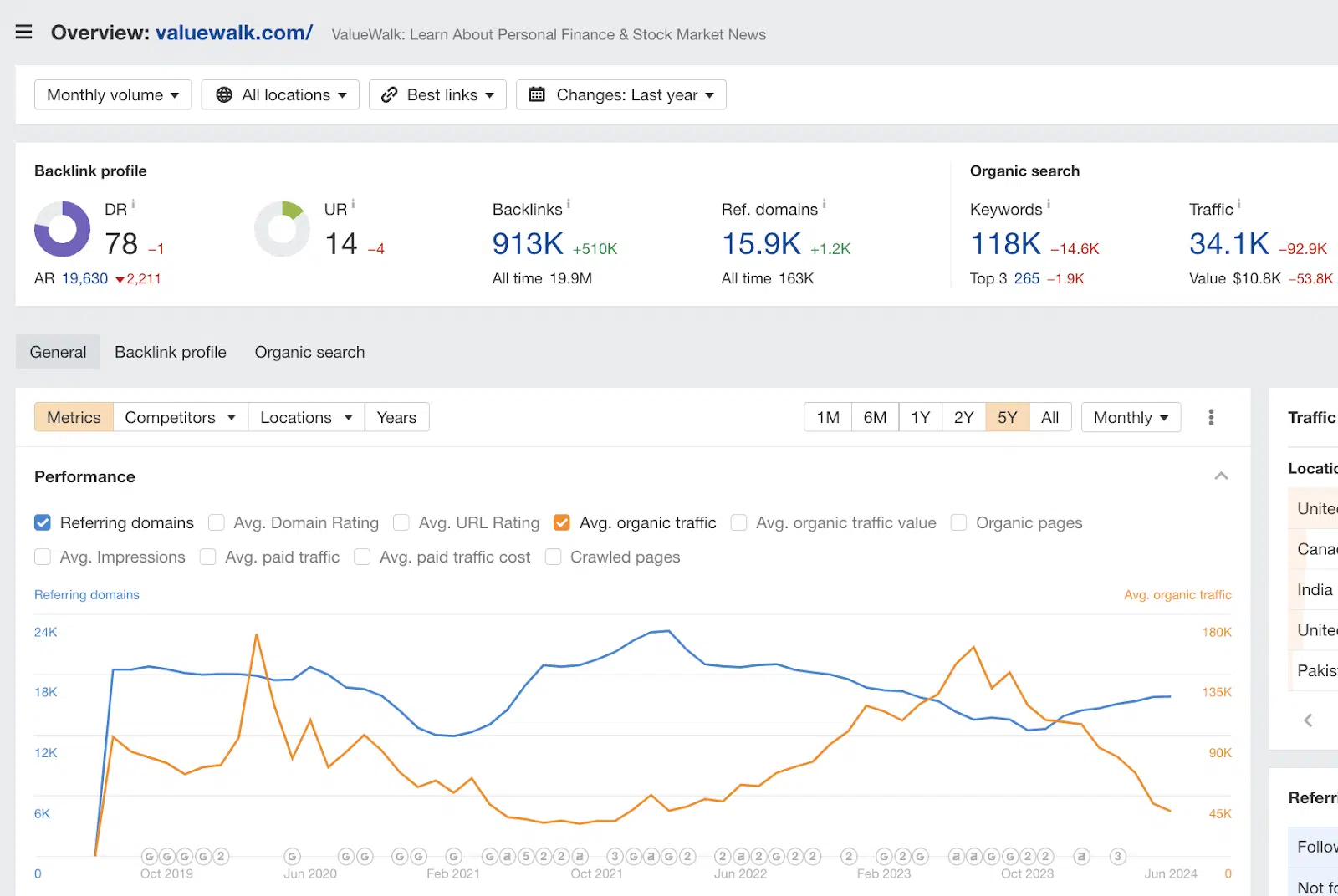


The moral of the story? Don’t be lured by the “low cost” and perceived “high ROI” of paid link vendors. In the world of SEO, quality will always trump quantity.
By investing in high-quality, earned media strategies, you can secure valuable, sustainable links that enhance your brand’s authority and drive meaningful results.
Remember, the cost of buying links extends beyond the financial; it impacts your site’s integrity and your brand’s trustworthiness. Choose wisely and prioritize quality over shortcuts to build a robust, penalty-free backlink profile that drives rankings and qualified search traffic.
Dig deeper: Link building in 2024: 12 ways to win or fail
Contributing authors are invited to create content for Search Engine Land and are chosen for their expertise and contribution to the search community. Our contributors work under the oversight of the editorial staff and contributions are checked for quality and relevance to our readers. The opinions they express are their own.
Related stories